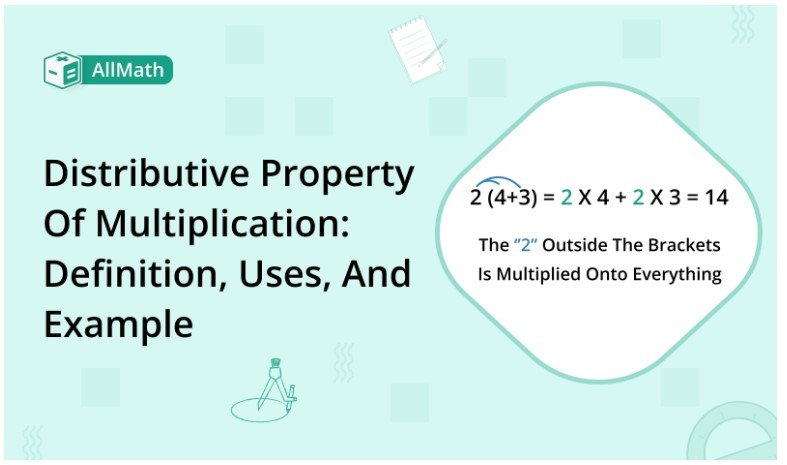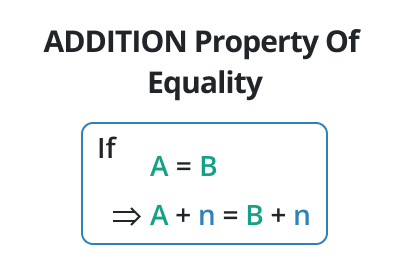To calculate result you have to disable your ad blocker first.

Distributive Property of Multiplication: Definition, Uses, and Example

Publish Date: 08 Aug, 2023
Table of Content
The distributive principle of multiplication is a calculation and problem-solving way used by mathematicians. It enables us to give each statement that is surrounded by a set of brackets a factor. We may quickly reach conclusions by using this ability to break complicated problems down to their most fundamental components.
The distributive property effectively says that we may distribute the multiplication to each item in the brackets when we multiply a number by a sum or difference. In other words, we multiply the integer by each term separately and then add the results.
What is Distributive Property?
A key idea in mathematics is the distributive property, which helps us multiply or distribute a single word across numerous words surrounded by brackets.
Due to this characteristic, the multiplication may be divided among each word inside the parentheses when a number or variable outside the parenthesis is multiplied by a sum or difference inside the brackets.

Uses of the Distributive Property
One of the primary uses of the distributive property is to simplify expressions. By distributing the factor to each term within parentheses, we can eliminate the parentheses and combine like terms, resulting in a more concise and manageable expression.
By using the equation 2 * (x + 3) + 4 * (x – 2) as an example. The statement is made simpler by using the distributive property on each set of brackets.
= 2 * (x + 3) + 4 * (x - 2)
= (2 * x) + (2 * 3) + (4 * x) - (4 * 2)
= 2x + 6 + 4x - 8
= 6x - 2
Using the distributive property, we have eliminated the parentheses and combined like terms to obtain the simplified expression 6x – 2.
Applying it to algebraic equations
The distributive property is particularly useful when solving algebraic equations. It allows us to expand expressions and manipulate them to isolate variables or simplify equations.
For example, let's solve the equation 2 * (x + 5) = 18.
We can solve this equation by using distributive property:
2 * (x + 5) = 18
2x + 10 = 18
2x = 18 - 10
2x = 8
x = 8 / 2
x = 4
By using the distributive property to simplify the equation, we have successfully solved for the variable x.
Distributive property's importance
The distributive property holds significant importance in mathematics and has a wide range of applications in various fields.
Role in mathematical operations
The distributive property forms the foundation for many mathematical operations and concepts. It helps us to quickly complete computations, simplify statements, and solve equations. Without this function, mathematical operations would be far more time-consuming and difficult.
Relevance in real-life scenarios
Although the distributive property is a mathematical concept, its applications extend beyond the classroom. It finds relevance in real-life scenarios such as distribution and grouping.
For example, when calculating the total cost of multiple items with different prices, we can use the distributive property to distribute the prices to each item and sum them up.
Common misconceptions about the distributive property
Although becoming a fundamental concept, it's common for students to confuse the distributive principle or have trouble understanding how to apply it. Let's remove some common misconceptions and any doubts.
- Only multiplication is covered by the distributive property
- The distributive property only works with numbers.
Clarification about multiplication
Although it may be used for addition, subtraction, and division, the distributive property is most usually utilized together with multiplication. It is a versatile property that holds true for various mathematical operations.
Clarification about numbers
The distributive property applies to numbers, variables, and algebraic expressions. It allows us to manipulate and simplify expressions regardless of whether they contain numerical values or variables.
Examples
Example 1:
Simplify the expression by using the distributive property of multiplication: 3 * (2x + 4)
Solution:
Step 1: Apply the distributive property
= 3 * (2x + 4)
= 3*2x + 3*4
Step 2: Simplify
= 6x + 12
Example 2:
Solve the equation and find the value of “x” by using the distributive property of multiplication: 5 * (x - 2) = 15
Solution:
Step 1: Apply the distributive property
5 * (x – 2) = 15
5 * x – 5 * 2 = 15
5x – 10 = 25
Step 2: By using the other mathematical rules
5x = 25 + 10
5x = 35
x = 35 / 5
x = 7
Wrap up
Mathematicians can do calculations, solve equations, and simplify statements fast because of the distributive idea of multiplication. It is important for many mathematical procedures and has benefits in daily life.
